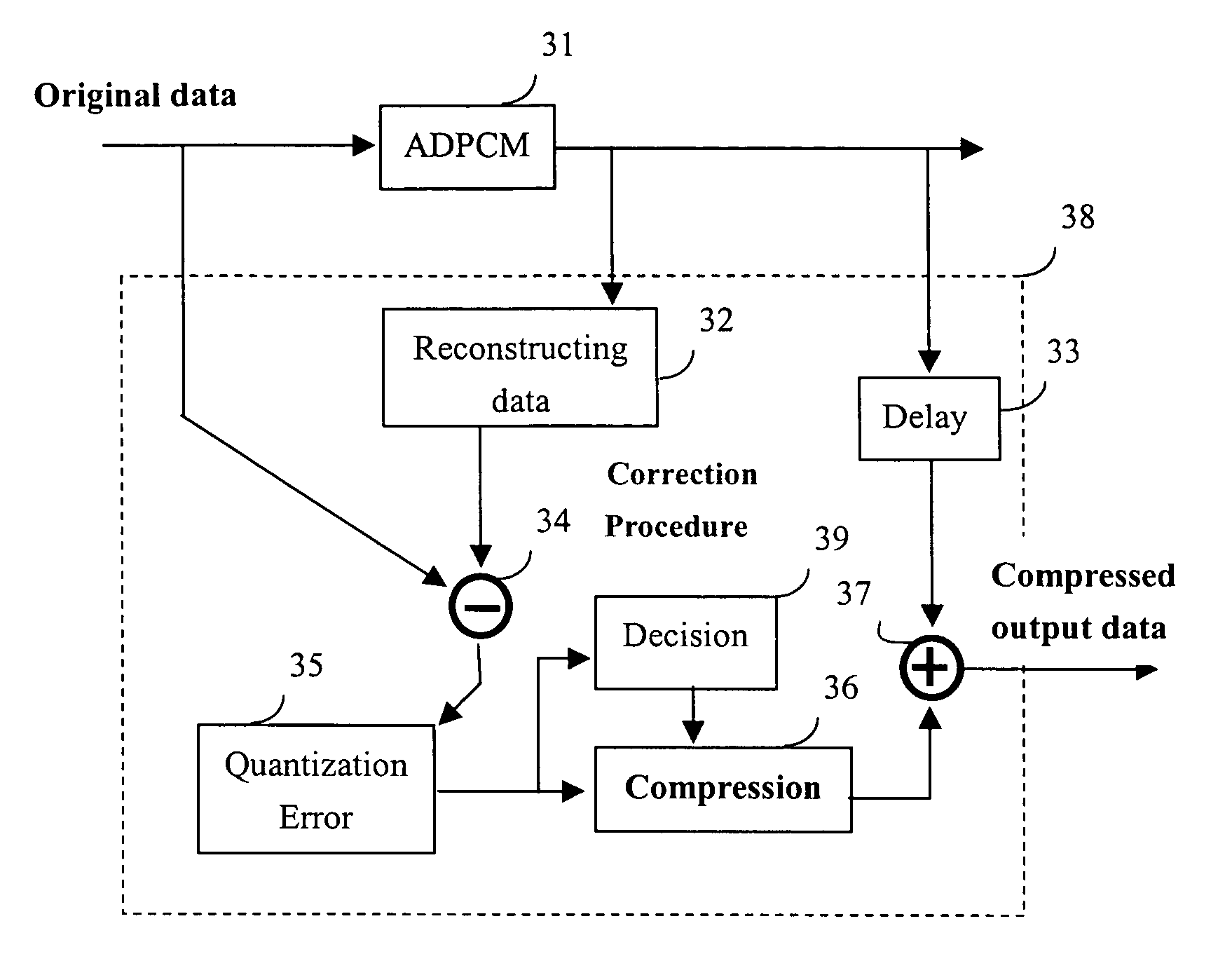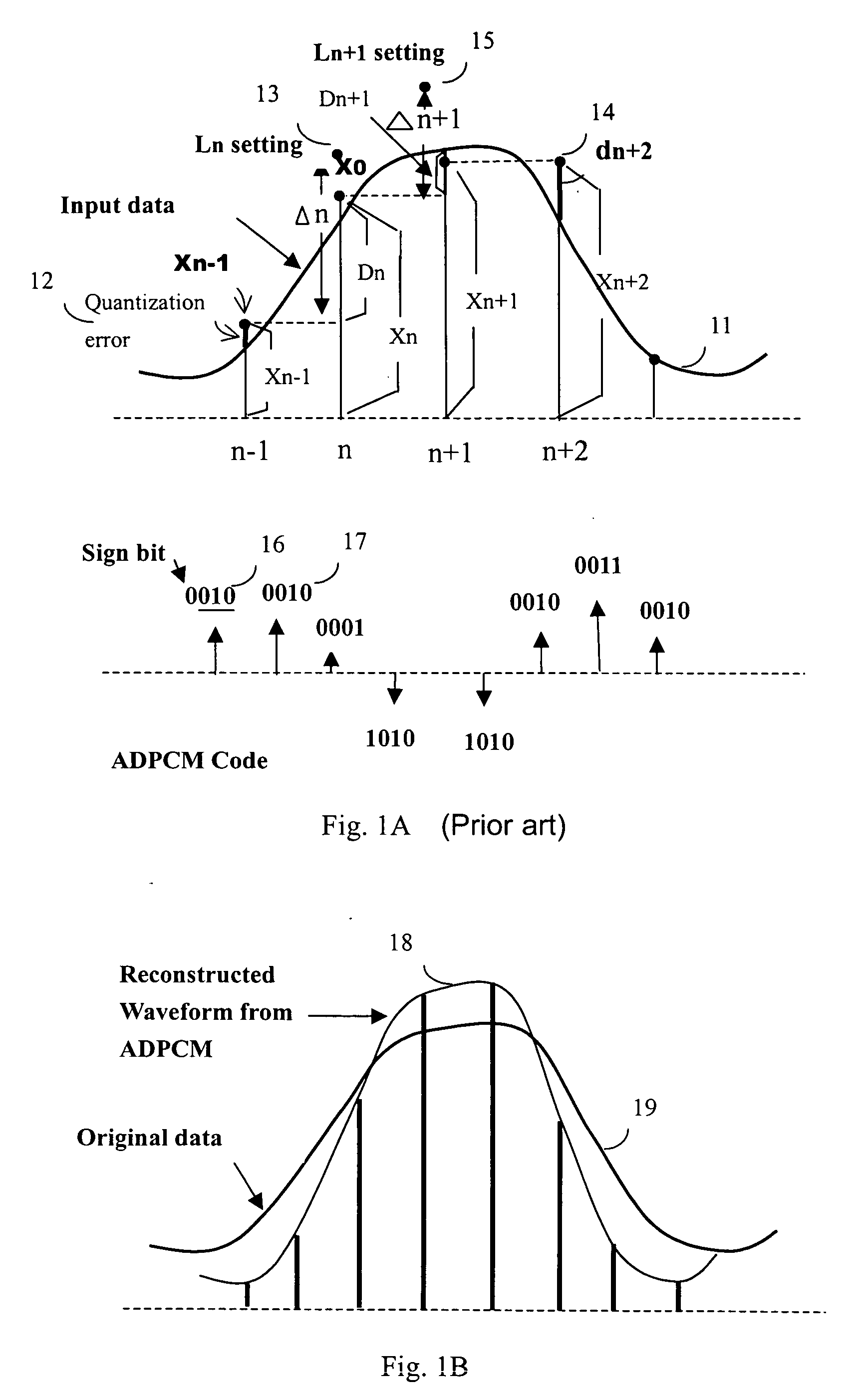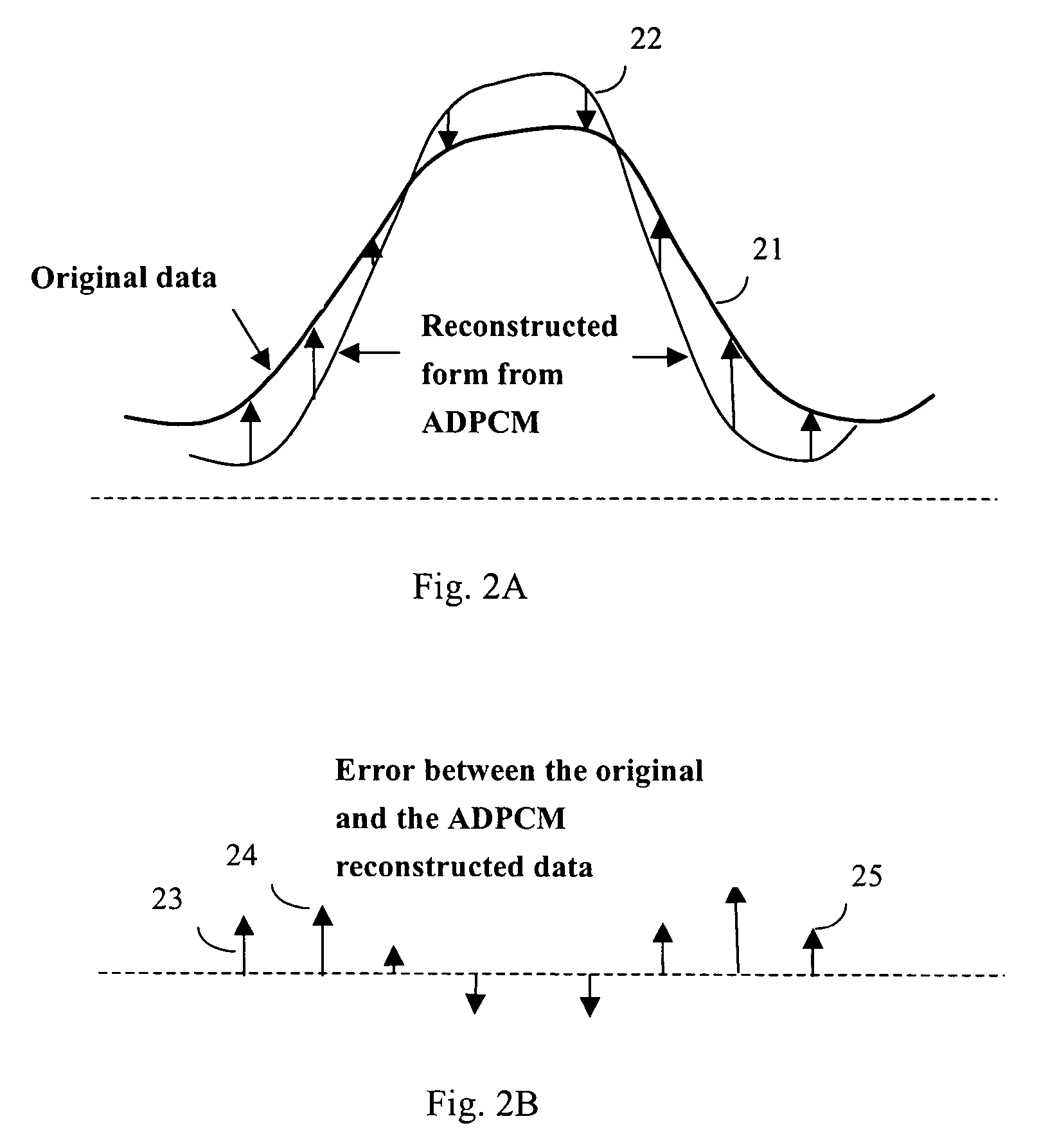Method for audio and image data compression
a data compression and audio technology, applied in the field of audio and image compression, can solve the problems of high cost, high power consumption for proper operation, difficult time domain compression, etc., and achieve the effect of reducing the data amount of error correction cod
- Summary
- Abstract
- Description
- Claims
- Application Information
AI Technical Summary
Benefits of technology
Problems solved by technology
Method used
Image
Examples
Embodiment Construction
[0032] The present invention relates specifically to the compression of the data waveform image, audio and speech data reduction while still maintaining good quality. The present invention significantly reduces the amount of image and audio data and stored in a storage device, and correspondingly reduce the density, bandwidth requirement and cost of storage devices for storing image and audio data.
[0033] In the foregoing general description, all terms mentioning “audio” in general stands for the inclusion but not limit to any forms of representative of “speech”, and “audio”.
[0034] In compressing the image and audio data, one can actually reduce the amount of data stored for reproduction by using a concept related to delta modulation as follows. When the image and audio data waveform is being sampled, for each sample a value is stored that represents the amplitude difference between samples. This scheme, called Differential Pulse-Code Modulation, or DPCM, allows more that a single ...
PUM
 Login to View More
Login to View More Abstract
Description
Claims
Application Information
 Login to View More
Login to View More - R&D
- Intellectual Property
- Life Sciences
- Materials
- Tech Scout
- Unparalleled Data Quality
- Higher Quality Content
- 60% Fewer Hallucinations
Browse by: Latest US Patents, China's latest patents, Technical Efficacy Thesaurus, Application Domain, Technology Topic, Popular Technical Reports.
© 2025 PatSnap. All rights reserved.Legal|Privacy policy|Modern Slavery Act Transparency Statement|Sitemap|About US| Contact US: help@patsnap.com



